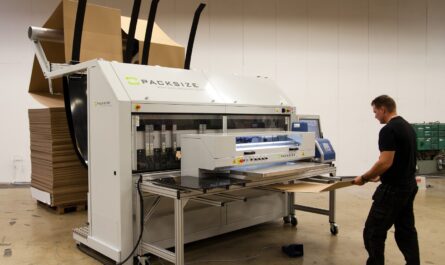Print Labels: Your Marketing Partner
In today’s digital world, physical printed labels play an important role for branding and marketing. Whether you want to label your products, packages or promote an event, print labels can effectively convey your message to the target audience. With various customization options available, print labels have evolved as a versatile marketing tool for businesses of all sizes.
The Rise of Print Labels
While digital media certainly dominates the marketing landscape, print labels are experiencing a resurgence. Even in this digital era, consumers still prefer to see and touch physical labels on products and packaging. Print labels provide an authentic, tangible representation of the brand which builds trust. Some key factors contributing to the rise of print labels include:
– Customization Options
With advances in printing technologies, print labels can now be customized as per any shape, size, design and finishing. Complex graphics, barcodes, QR codes etc. can easily be incorporated. This allows brands to stand out on shelves through unique, eye-catching designs.
– Affordability
Thanks to widespread availability of low-cost printing solutions, it has become very affordable for businesses of all scales to design and print high-quality labels. No longer is large-scale printing required to reap the benefits of customized print labels.
– Impactful Branding Tool
Unlike ads or posts that get lost in the digital clutter, print labels stay with the product and keep reminding consumers about your brand every time they see or use the product. This makes labels highly effective for creating top-of-mind recall among target audiences.
Types of Print Labels
Depending on the material, application and purpose, there are different types of print labels available:
– Paper Labels
Made of paper or paper-based materials, these versatile labels can be used for various indoor and outdoor applications like product labeling, shelf-talkers etc. Barrier paper provides moisture/tear resistance.
– Polyester Labels
Polyester (PET) material makes these labels highly durable for outdoor or harsh environment uses such as equipment/machinery labeling. PET labels withstand all weather conditions and last for many years without fading.
– Vinyl Labels
PVC vinyl is a popular material for labels due to its weather resistance, durability and ability to accept complex graphics and textures. Commonly used for appliance labeling, outdoor signage, vehicle graphics etc.
– Thermal Transfer Labels
Using thermal (heat-activated) technology, these labels can be easily customized and coded with variable data such as pricing, barcodes etc. Used in warehousing, logistic and other industrial applications.
– GHS Compliant Labels
Special labels designed as per Globally Harmonized System standard codes to indicate product hazards. Important for chemical, industrial and agricultural product labeling.
Designing Effective Print Labels
Whether created in-house or outsourced to a printing company, the design process plays a big role in the label’s effectiveness. Here are some best practices:
Graphics and Imagery
– Use high resolution photos/graphics that are visually appealing yet convey the product attributes or branding message succinctly.
– Incorporate your brand’s colors, fonts and logos for consistency across marketing campaigns.
– Consider scannable codes like barcodes and QR codes if needed for the application.
Content and Call-Outs
– Prioritize key information like company/product name, ingredients, nutritional values, usage instructions etc. as per regulatory guidelines.
– Include an enticing headline or call-out to grab attention on shelves.
– Consider highlighting promotions, special offers to drive immediate sales.
Layout and Formatting
– Make sure the text is clear, legible and appropriately sized for the label dimensions and target audience.
– Use visually balanced layout with ample whitespace and grouping related elements together.
– Adopt simple, easy-to-follow designs for regulated labels like chemicals etc.
Testing and Approvals
Once the print label design is finalized, it must undergo various tests and approvals depending on the intended application and location of use. For example:
– Adhesion/Durability Testing
Simulates real-world conditions to ensure the label withstands processing, handling and the intended product lifecycle without peeling, cracking or fading.
– Chemical Resistance Testing
Important for labels used in harsh, wet industrial environments or for products containing chemicals to ensure the design materials are not affected.
– Regulatory Compliance
Mandatory testing and certification processes to verify labels adhere to global standards like GHS, FDA, UL, CE etc. depending on the product type and target market.
Printing and Application
With the design and approvals complete, it’s time to print the labels using suitable production methods like:
– Digital Printing
Suitable for low to mid-volume label runs with quick turnaround times and on-demand printing capabilities. Offers wide format/size ranges.
– Flexography Printing
Better suited for high-volume production runs with affordable bulk printing capabilities on various materials like paper, films and non-wovens.
– Screen Printing
Specialized process used for printing intricate textures, spot colors, vinyl applications requiring a tactile finish.
– Roll-Fed or Cut-Sheet Printing
Depends on the shape, size and application of the print labels being produced. Cut-sheet labels provide precision die-cutting while rolls offer continuous production.
Labels are then die-cut, inspected, packed and ready for automated application or manual placement during product/packaging assembly lines. Sophisticated equipment ensures correct label orientation and accurate placement.
Measuring the Impact
It’s important to track print label campaigns and quantify their effectiveness through metrics like:
– Sales Data Correlation
Analyzing sales figures before and after label rollout can indicate any positive influence on purchasing decisions.
– Online Reviews and Feedback
Look out for mentions of labels attracting customer attention in product reviews across various shopping sites and forums.
– Footfall at Retail Stores
Monitor store traffic or footfalls before and after deploying shelf-talkers, posters, wayfinding signage labels etc.
– Online Surveys and Questionnaires
Quick surveys can gather customer impressions about the labels’ visual appeal, information clarity and influence in buying choices.
With proper planning, design, testing and impact tracking, print labels can deliver affordable yet highly measurable marketing results for brands across all industries. Their versatility makes labels a vital touchpoint for any omnichannel branding strategy.
Note:
1. Source: Coherent Market Insights, Public sources, Desk research
2. We have leveraged AI tools to mine information and compile it




